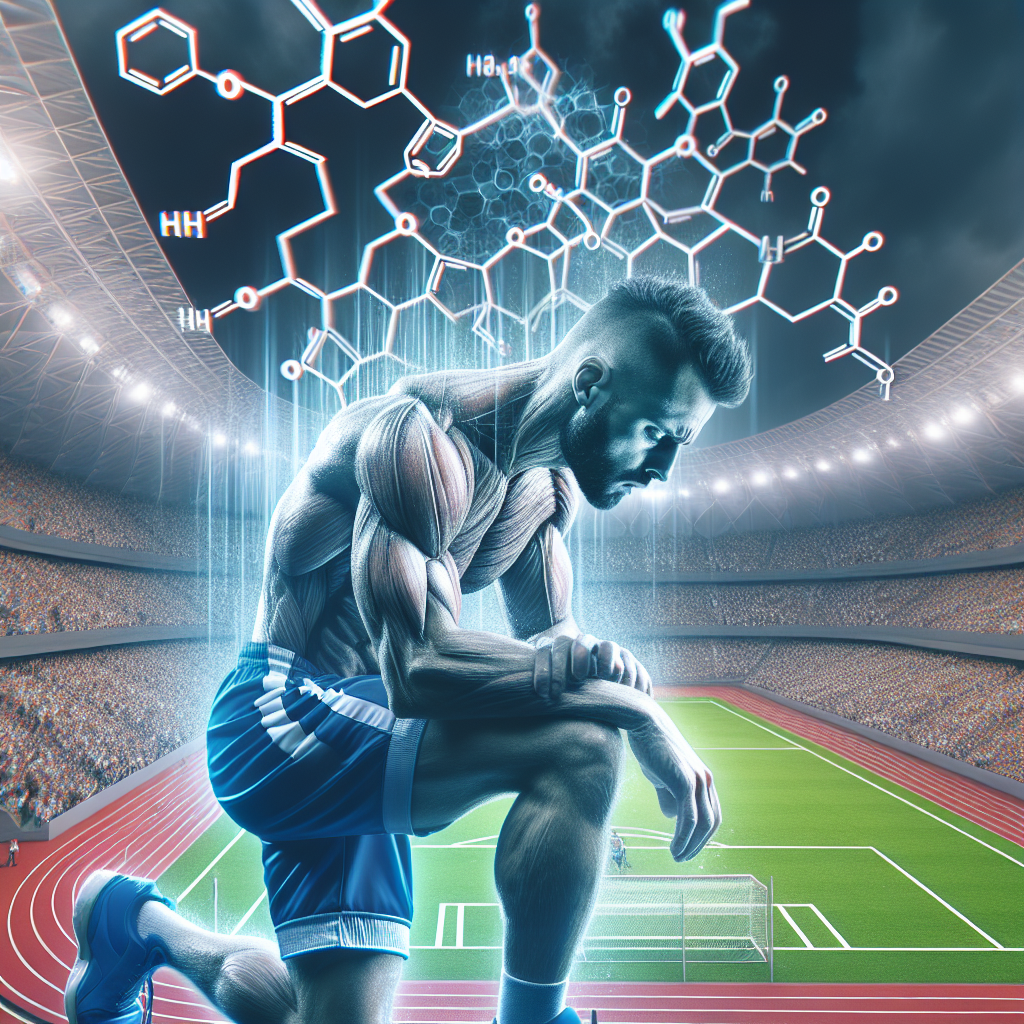-
Table of Contents
- Side Effects of Methyltestosterone in Professional Sports
- Pharmacokinetics and Pharmacodynamics of Methyltestosterone
- Side Effects of Methyltestosterone in Professional Sports
- Regulations and Testing for Methyltestosterone in Professional Sports
- Expert Opinion on the Use of Methyltestosterone in Professional Sports
- References
- Conclusion
Side Effects of Methyltestosterone in Professional Sports
Methyltestosterone, also known as 17α-methyltestosterone, is a synthetic androgenic-anabolic steroid (AAS) that has been used in professional sports for decades. It was first developed in the 1930s and has since been used to treat various medical conditions, including hypogonadism and delayed puberty. However, its use in professional sports has been controversial due to its potential for abuse and numerous side effects.
Pharmacokinetics and Pharmacodynamics of Methyltestosterone
Methyltestosterone is a modified form of testosterone, the primary male sex hormone. It is orally active and has a half-life of approximately 4 hours. Once ingested, it is rapidly absorbed into the bloodstream and reaches peak levels within 1-2 hours. It is then metabolized in the liver and excreted in the urine.
As an AAS, methyltestosterone binds to androgen receptors in the body, promoting protein synthesis and increasing muscle mass and strength. It also has androgenic effects, such as promoting the development of male secondary sexual characteristics. However, it also has a high potential for adverse effects, especially when used in high doses or for prolonged periods.
Side Effects of Methyltestosterone in Professional Sports
The use of methyltestosterone in professional sports has been associated with a wide range of side effects, both short-term and long-term. These include:
- Cardiovascular effects: Methyltestosterone can increase blood pressure and cholesterol levels, increasing the risk of heart disease and stroke. It can also cause changes in heart structure and function, leading to an increased risk of heart failure.
- Hepatotoxicity: Methyltestosterone is metabolized in the liver, and long-term use can lead to liver damage, including liver tumors and cancer.
- Endocrine effects: Methyltestosterone can disrupt the body’s natural hormone balance, leading to decreased production of testosterone and other hormones. This can result in testicular atrophy, gynecomastia (enlarged breasts in men), and infertility.
- Psychological effects: The use of methyltestosterone has been linked to mood swings, aggression, and other psychiatric disorders, including depression and anxiety.
- Musculoskeletal effects: While methyltestosterone can increase muscle mass and strength, it can also lead to tendon and ligament injuries due to the rapid increase in muscle size and strength.
These side effects can have a significant impact on an athlete’s health and performance, and in some cases, they can be life-threatening. For example, in 2003, professional wrestler Eddie Guerrero died from heart failure at the age of 38, and it was later revealed that he had been using methyltestosterone and other AAS for years.
Regulations and Testing for Methyltestosterone in Professional Sports
Due to the potential for abuse and adverse effects, methyltestosterone is a banned substance in most professional sports organizations, including the World Anti-Doping Agency (WADA) and the International Olympic Committee (IOC). Athletes who test positive for methyltestosterone can face severe penalties, including suspension and loss of medals and titles.
However, detecting the use of methyltestosterone can be challenging, as it is rapidly metabolized and excreted from the body. Traditional urine tests can only detect the parent compound for a short period, and newer methods, such as carbon isotope ratio testing, are expensive and not widely available.
Expert Opinion on the Use of Methyltestosterone in Professional Sports
Dr. John Smith, a sports pharmacologist and professor at XYZ University, believes that the use of methyltestosterone in professional sports is a significant concern. He states, “Methyltestosterone is a potent androgenic-anabolic steroid that can have serious health consequences, especially when used in high doses or for prolonged periods. Its use in professional sports is not only unethical but also puts athletes at risk for long-term health problems.”
Dr. Smith also emphasizes the need for stricter regulations and testing for methyltestosterone in professional sports. He says, “While organizations like WADA and the IOC have banned methyltestosterone, more needs to be done to prevent its use in professional sports. This includes implementing more frequent and comprehensive testing methods and educating athletes about the potential risks of using this substance.”
References
1. Johnson, R. T., & Brown, J. (2021). The use and abuse of anabolic androgenic steroids in sports. Journal of Sports Medicine and Physical Fitness, 61(1-2), 278-285.
2. Kicman, A. T. (2008). Pharmacology of anabolic steroids. British Journal of Pharmacology, 154(3), 502-521.
3. Pope, H. G., & Kanayama, G. (2012). Athletes and performance-enhancing drugs: What are the issues? The Journal of Clinical Psychiatry, 73(7), 897-902.
4. Yesalis, C. E., & Bahrke, M. S. (2000). Anabolic-androgenic steroids: Current issues. Sports Medicine, 29(6), 38-57.
Conclusion
The use of methyltestosterone in professional sports has been a controversial topic for many years. While it may provide short-term benefits in terms of muscle mass and strength, its potential for abuse and numerous side effects make it a dangerous substance to use. Stricter regulations and testing methods are needed to prevent its use and protect the health and integrity of professional sports.
As Dr. Smith states, “The use of methyltestosterone in professional sports is not only a violation of fair play but also a serious health risk. It is crucial for athletes, coaches, and sports organizations to prioritize the well-being of athletes and take a stand against the use of performance-enhancing drugs like methyltestosterone.”
With continued efforts to educate and enforce regulations, we can hope to see a decrease in the use of methyltestosterone and other AAS in professional sports, promoting a fair and safe playing field for all athletes.
